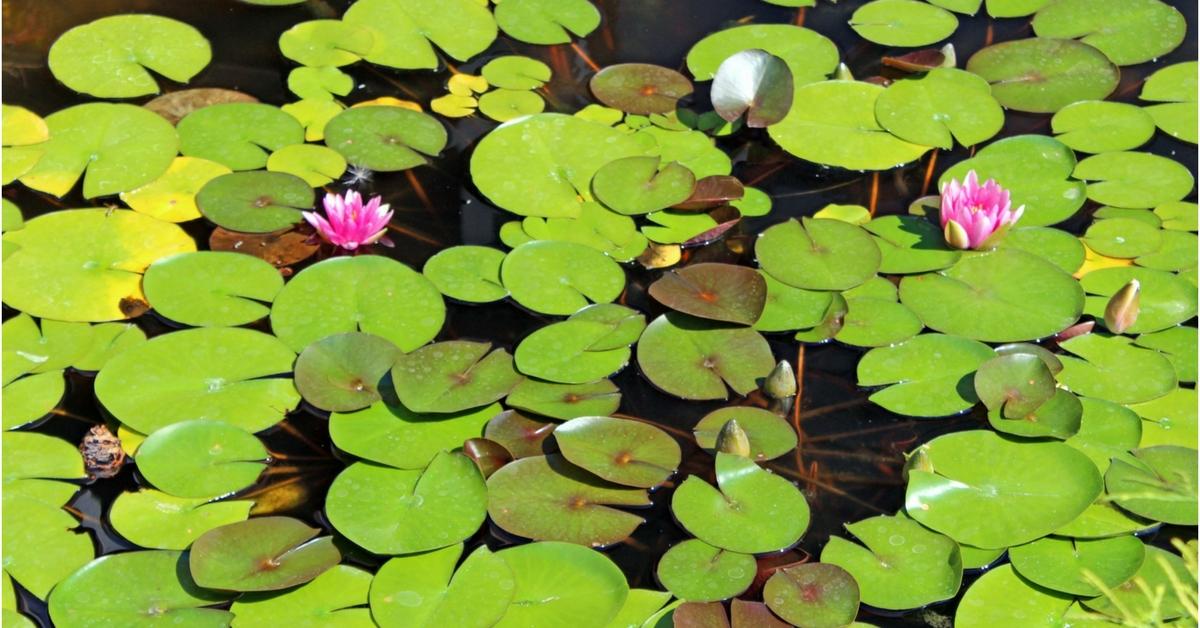Fishing Lily Pads: How To Catch Big Bass In The Pads
Matted vegetation seems to garner more attention from bass anglers but you should never overlook lily pads as a target for catching bass. Here is a breakdown for all anglers on fishing lily pads.Bass usually prefer other aquatic vegetation such as hydrilla, peppergrass or milfoil over lily pads on lakes with a variety of weeds, but lily pads are dominant cover for bass on other bodies of water. Most natural lakes have lily pads and some reservoirs with mud bottoms are loaded with the aquatic plants. Lily pads can be productive most of the year whether it’s when the pads have lush green bonnets in warmer months or even when the pads die in the cold weather and only the stems remain. The dead pads still form a canopy that baitfish hang around and bass use for cover.
Fishing Lily Pads By Season
During the dead of winter when the water temperature is in the 40-degree range, the key to catching bass in the pad stems is presenting a slow-moving bait to the fish. A soft jerkbait is an ideal choice to work through the pads because it can be Texas-rigged to prevent it from snagging in the stems and it falls slow enough to tempt sluggish bass burrowed in the vegetation remnants.Spring is an excellent time to fish pads for prespawn and spawning bass. You can catch loads of 2-and 3-pound fish when prespawn bass in Florida move into the shallows covered with lily pads. When the weather is stable with sunny skies and air temperatures in the 70s, try a hollow-body frog or soft plastic toad in the pads during the morning for some great topwater action.As the sun rises higher later in the day, bass seek the shade of the lily pads and move deeper into the pad canopies. The best way to catch bass burrowed into the pads is to crash a Texas-rigged plastic worm with a 3/4- or 1-ounce weight through the pads to trigger reaction strikes.
What To Throw When Fishing Lily Pads
Heavy fishing pressure can sometimes drive bass out of the pads so try a square-bill crankbait along the edges of the pads to catch bass moving out of the vegetation. If this tactic fails to produce throw a Texas-rigged finesse worm with a 1/8- or 3/16-ounce weight to the edges of the pads and let the worm fall slowly to catch bass hugging the bottom.The most productive spots along the pad edges are any holes or depressions that a 1 to 2 feet deeper than the rest of the bottom.If the weather is cloudy, you can throw plastic frogs and toads in the pads all day long since bass will be cruising through the weeds feeding on baitfish, crawfish or real frogs. Other weedless lures that trigger strikes when bass are inside the pads include spoons, buzz baits and floating worms.Bass will also be moving up and down the pad edges on cloudy days. Some of the best lures to throw for bass cruising the pad edges include topwater plugs, square-bill and lipless crankbaits, spinnerbaits, swimbaits, swim jigs, soft plastic jerkbaits, suspending stickbaits and plastic worms.Giant lily pads can be productive in the summer because the plants create a lot of shade for bass to find cooler water.
What Lures To Use For Fishing Under Lily Pads
The top lures for catching bass in the shade of the pads are Texas-rigged plastic worms or jigs.Dollar-size pads are prime targets in the fall because plants grow close together forming thick groups where the biggest bass hold before cold weather sets in. You need a weedless lure such as a Texas-rigged plastic worm to fish this type of pads effectively.Although all lily pads look fishy, it’s best to avoid fishing large sections of the floating plants. Concentrate on key areas such as unusual features along the pad line. Some features to look for include a point jutting out from the pad line, an isolated clump of pads, a log or stump protruding from the pads and isolated openings in a field of lily pads.
Gear & Tips For Fishing Lily Pads
Fishing pads usually requires some heavy duty tackle, so opt for a 7-foot or longer medium-heavy to heavy action baitcast rod with a fast tip so you will have enough power to horse a bass out of the pads. Use either 17- to 25-pound fluorocarbon or 50-pound braid for most of the lures you intend to work around or through lily pads.Hauling a big bass out of the tough pad stems can be challenging. When a bass strikes in the pads, set the hook immediately, hold your rod high and reel quickly to keep the fish’s head up so it doesn’t have a chance to burrow into the pad stems. If the bass does wrap up in the stems, your only option is to put the trolling motor on high, run to the pads and pull out the fish by hand.
Updated September 29th, 2020 at 11:16 AM CT


